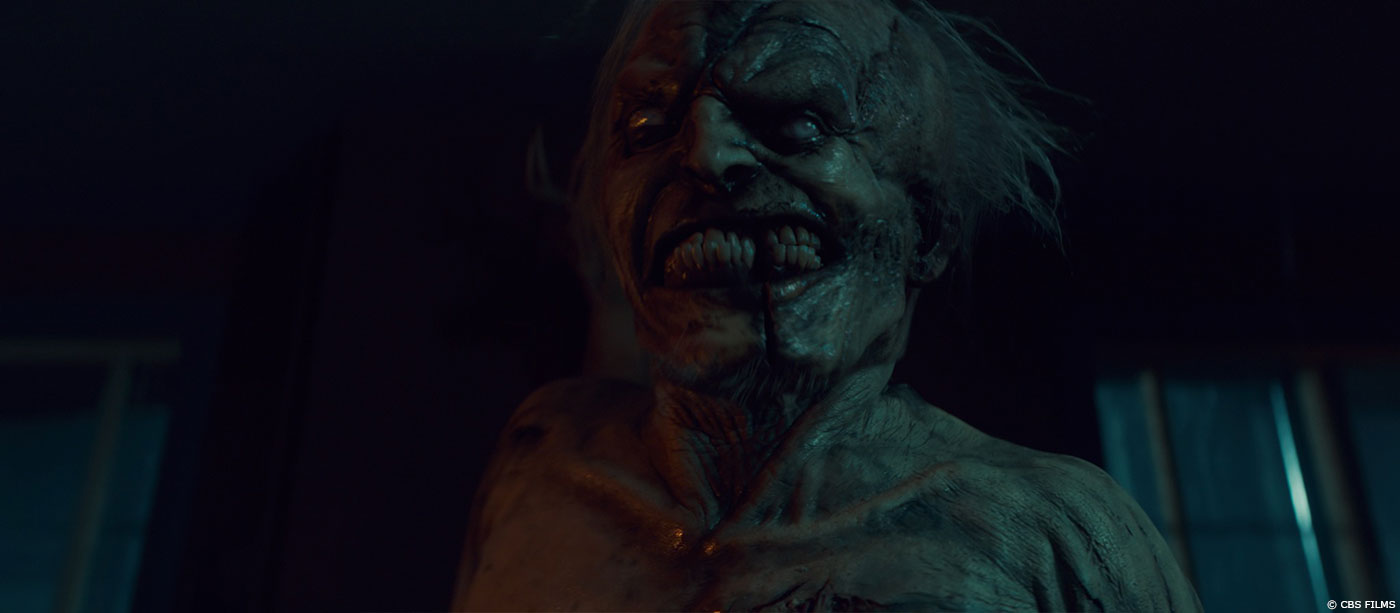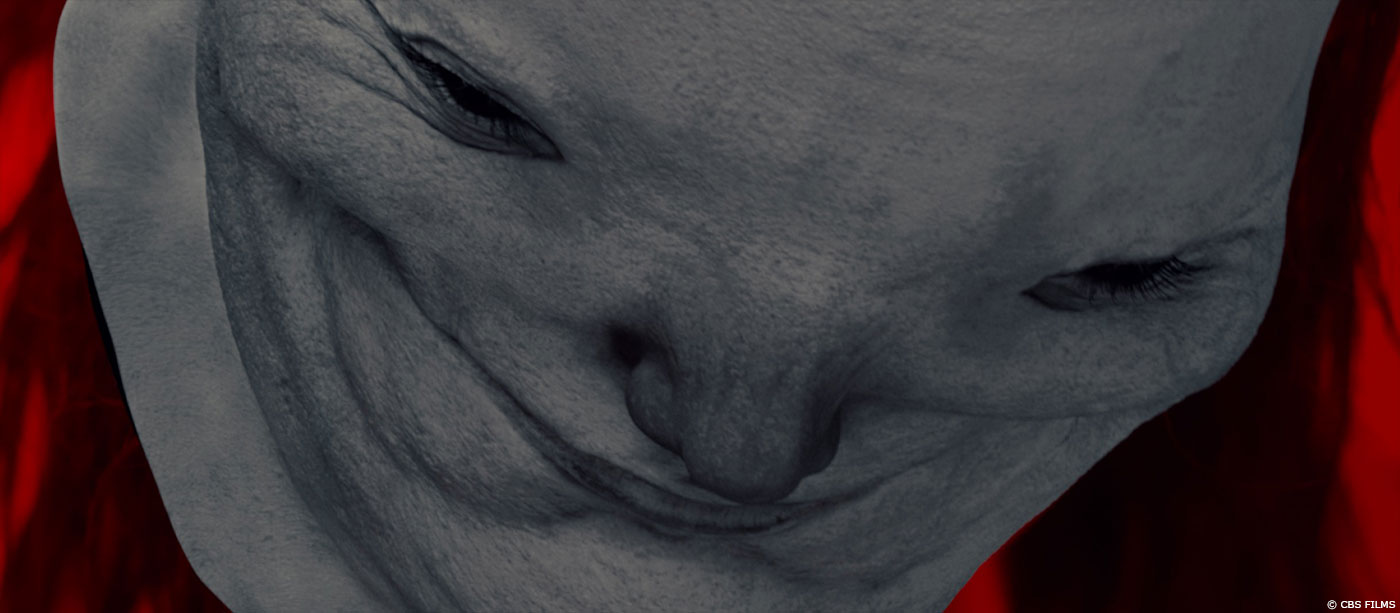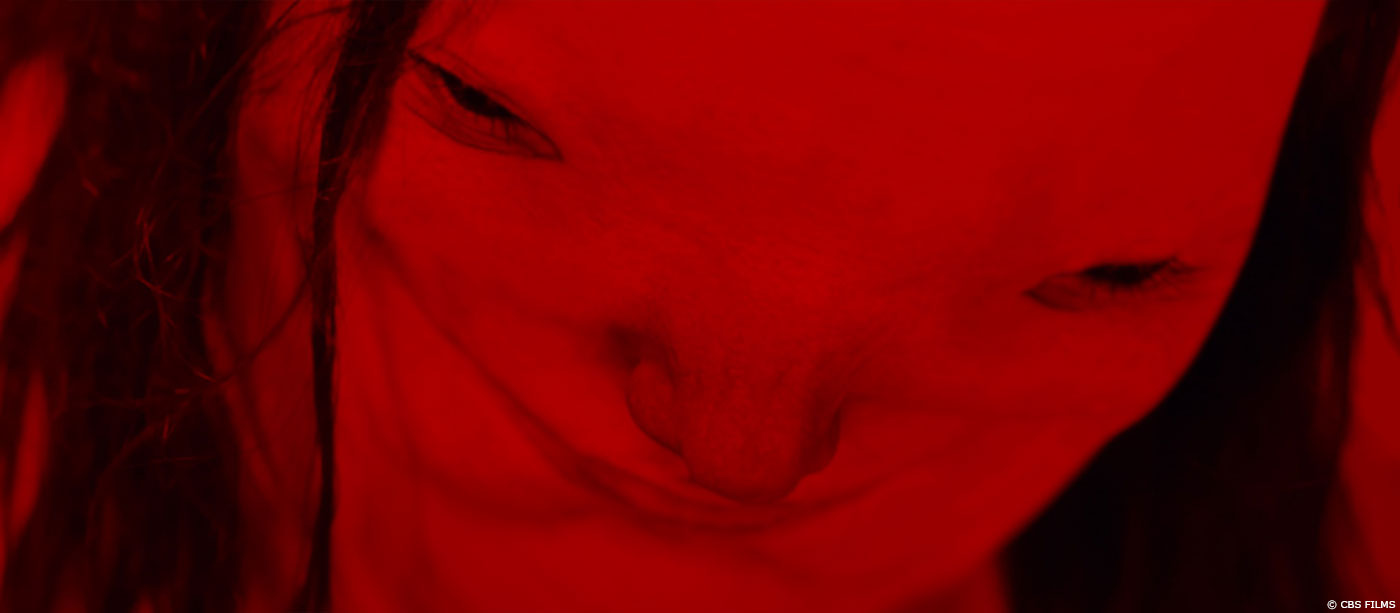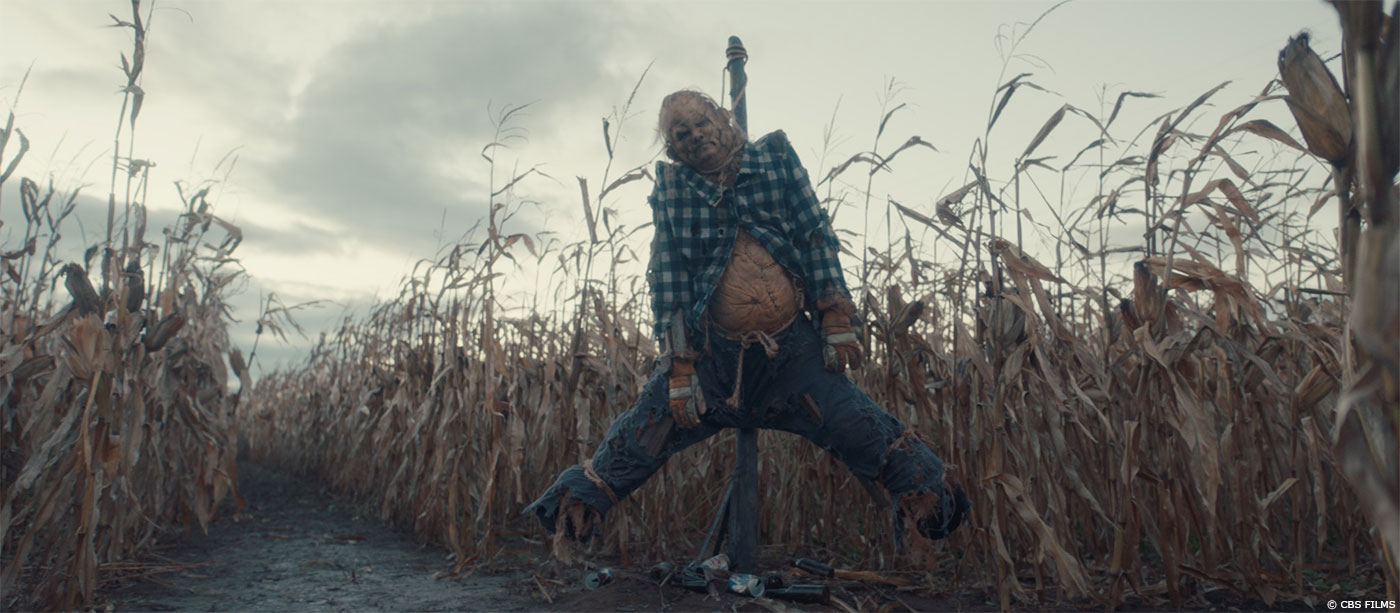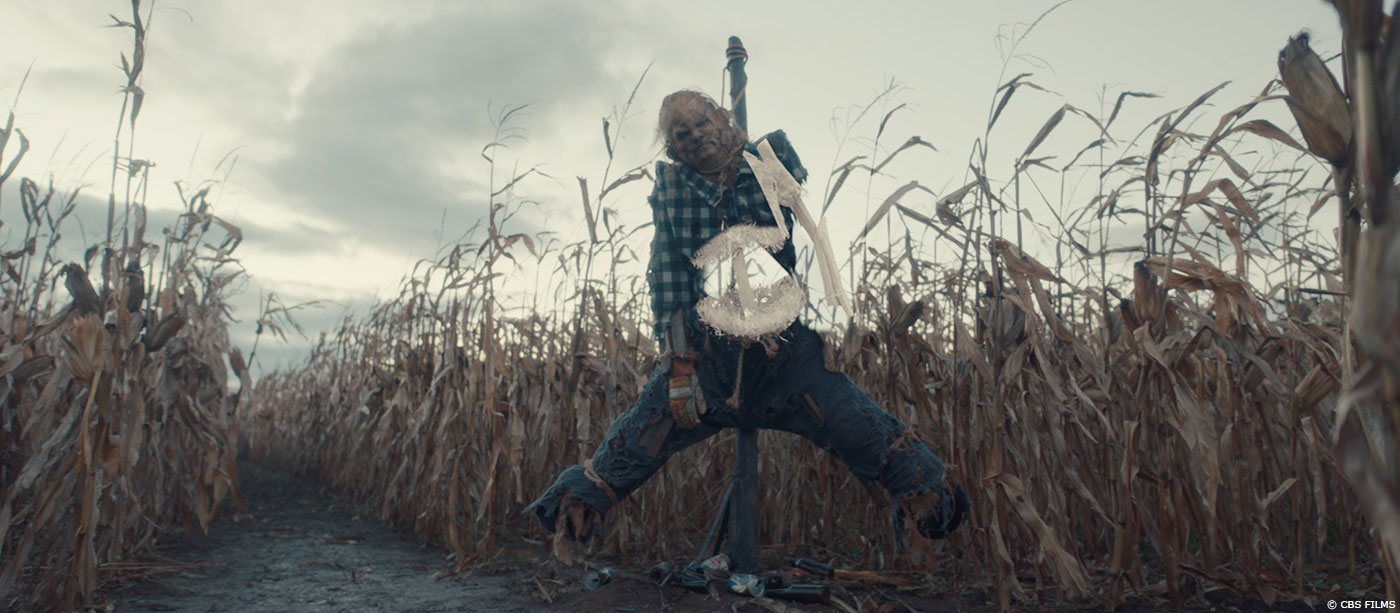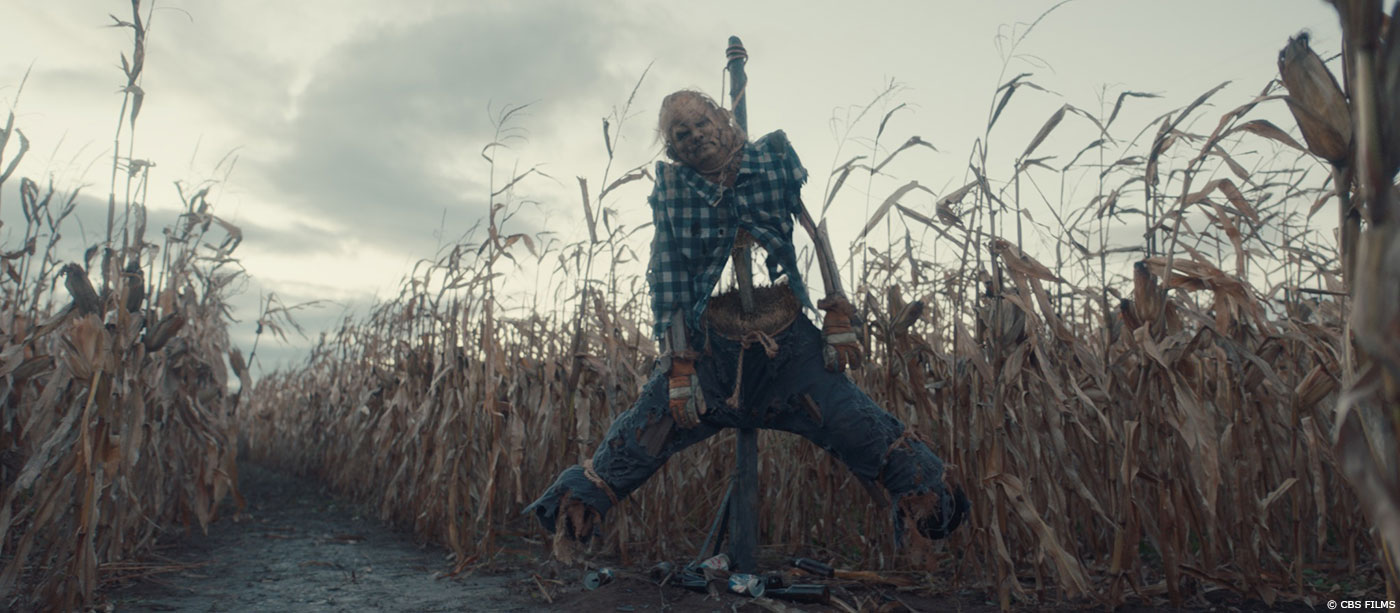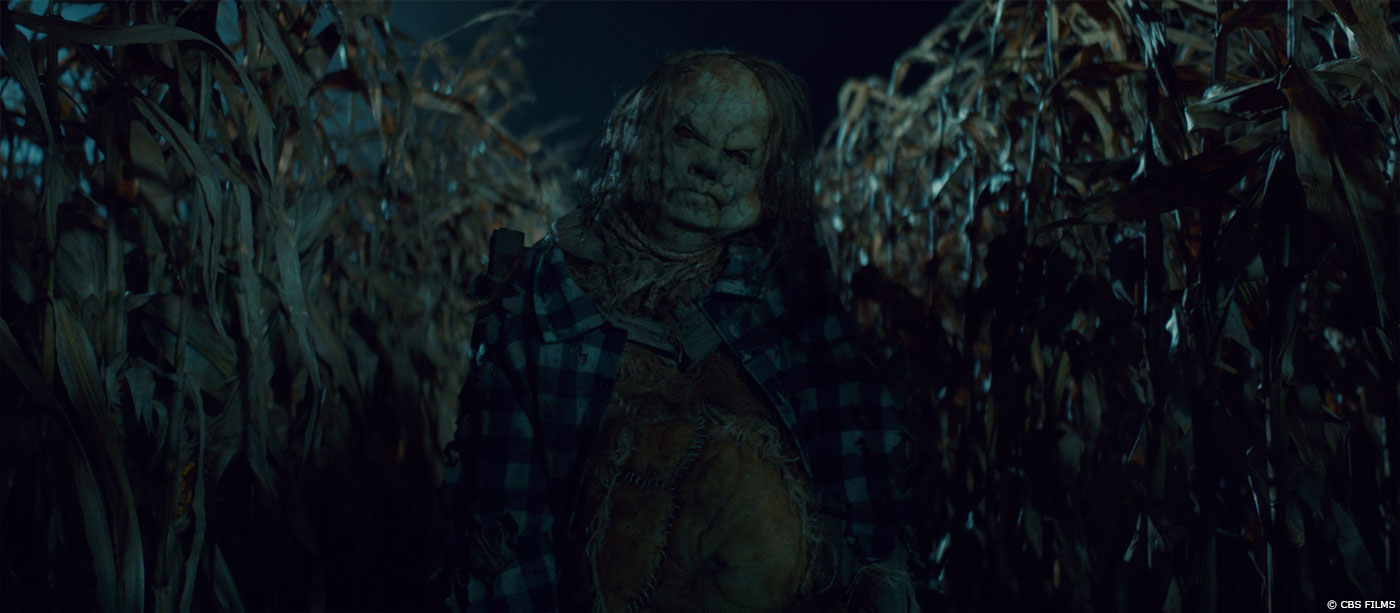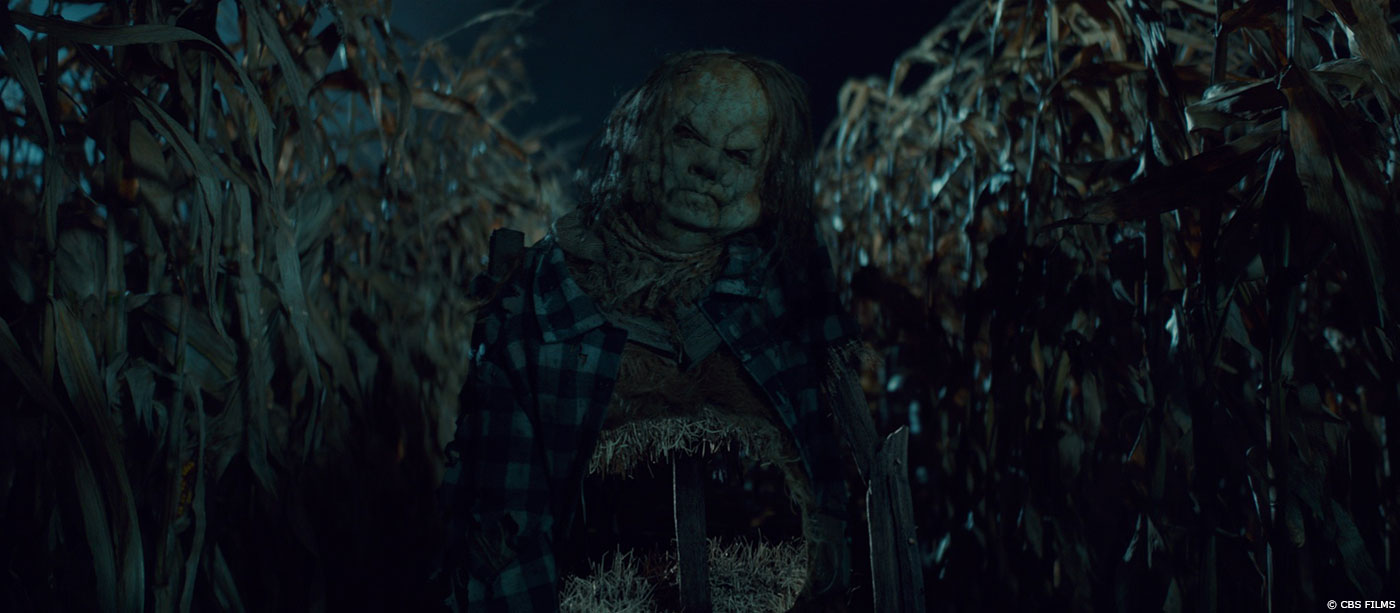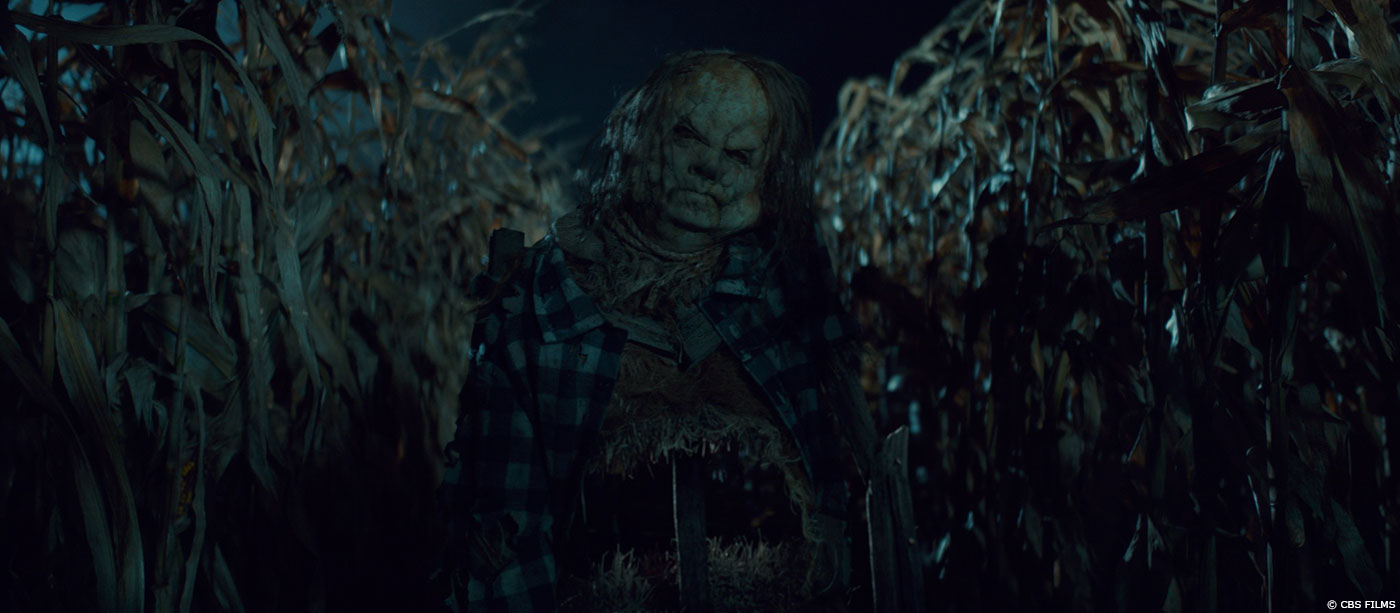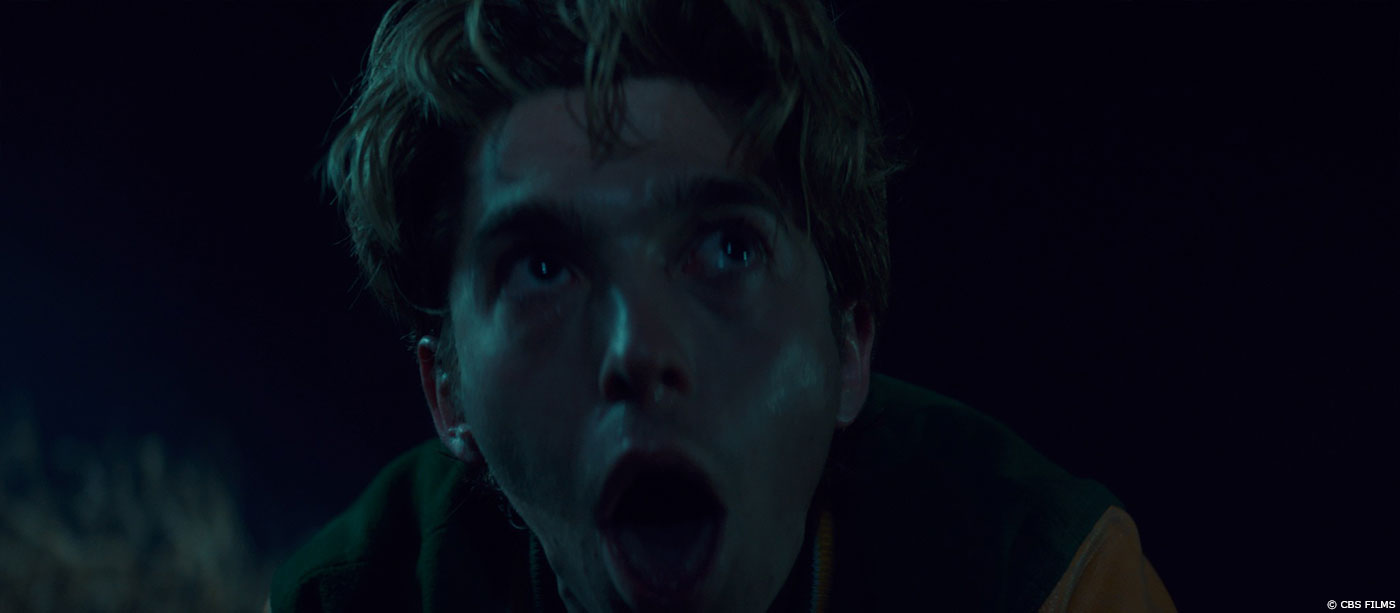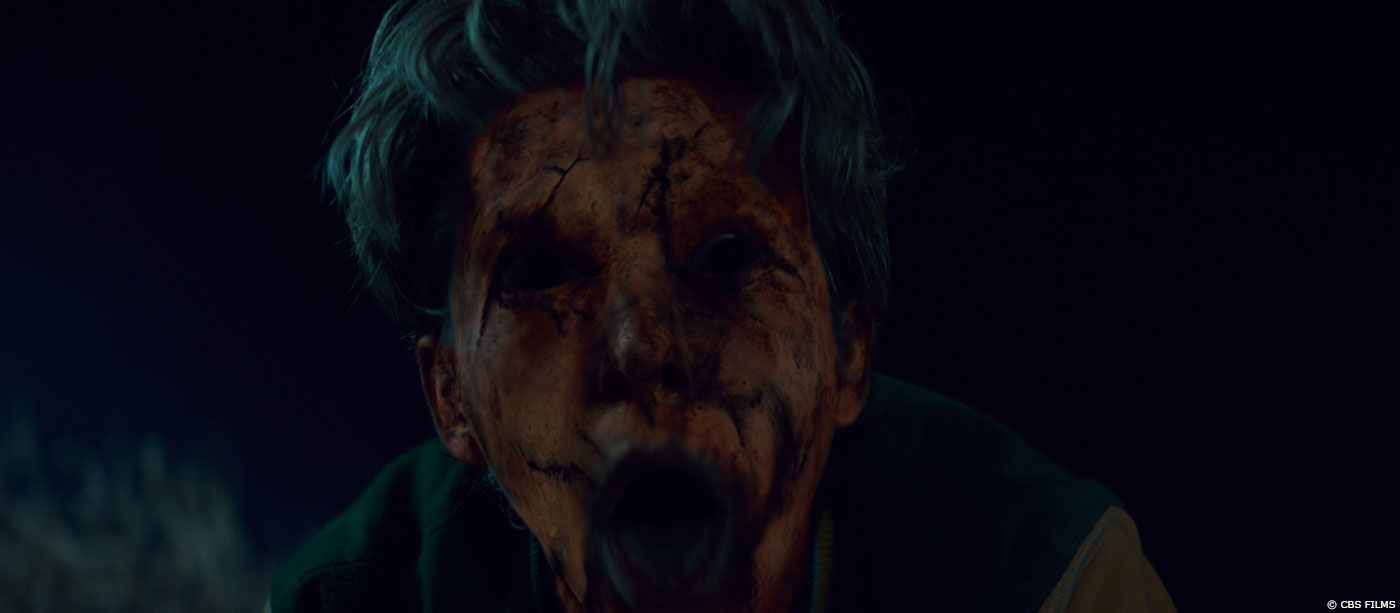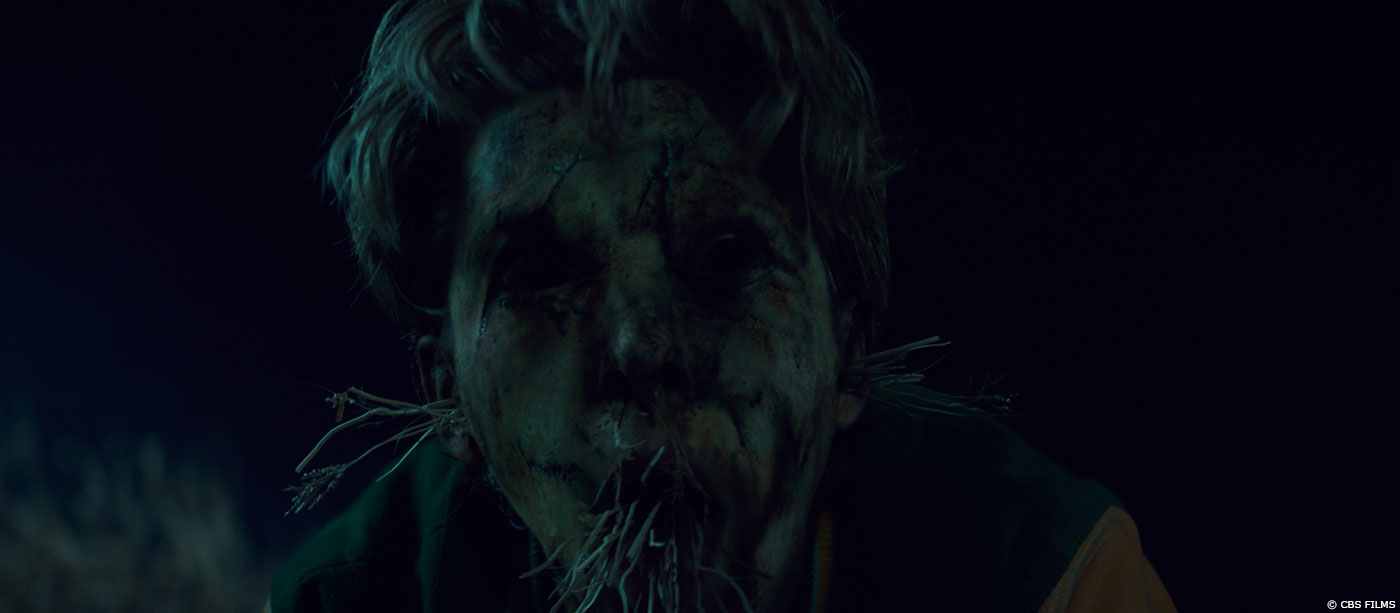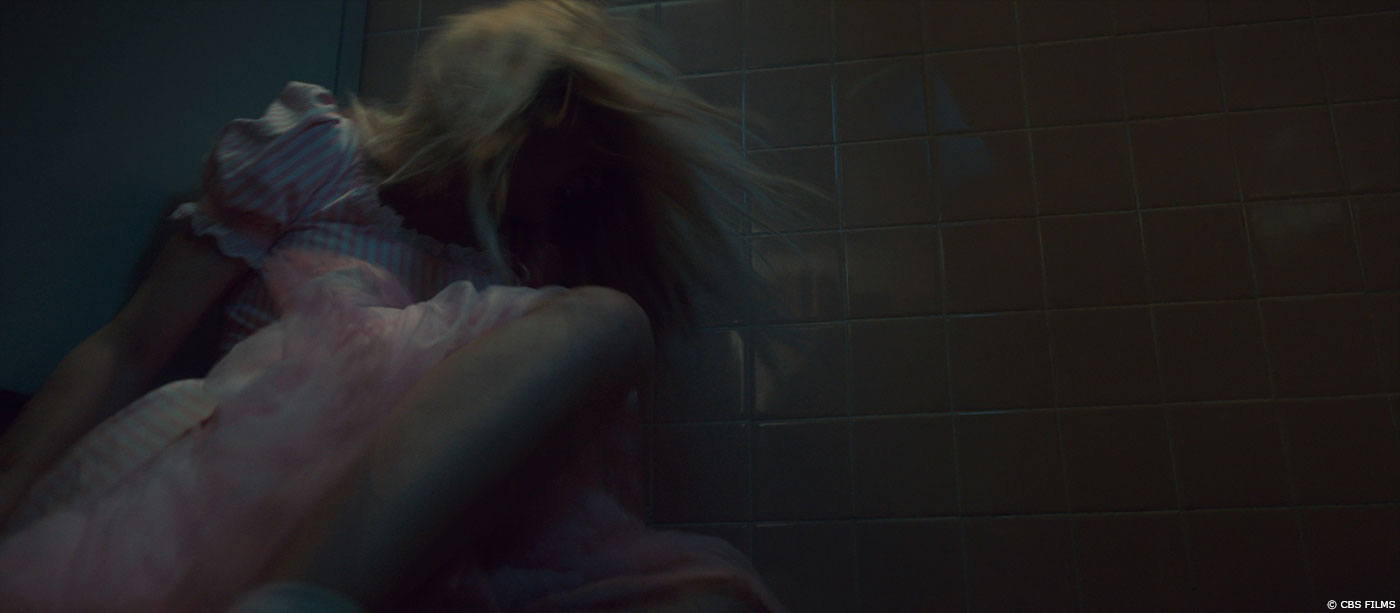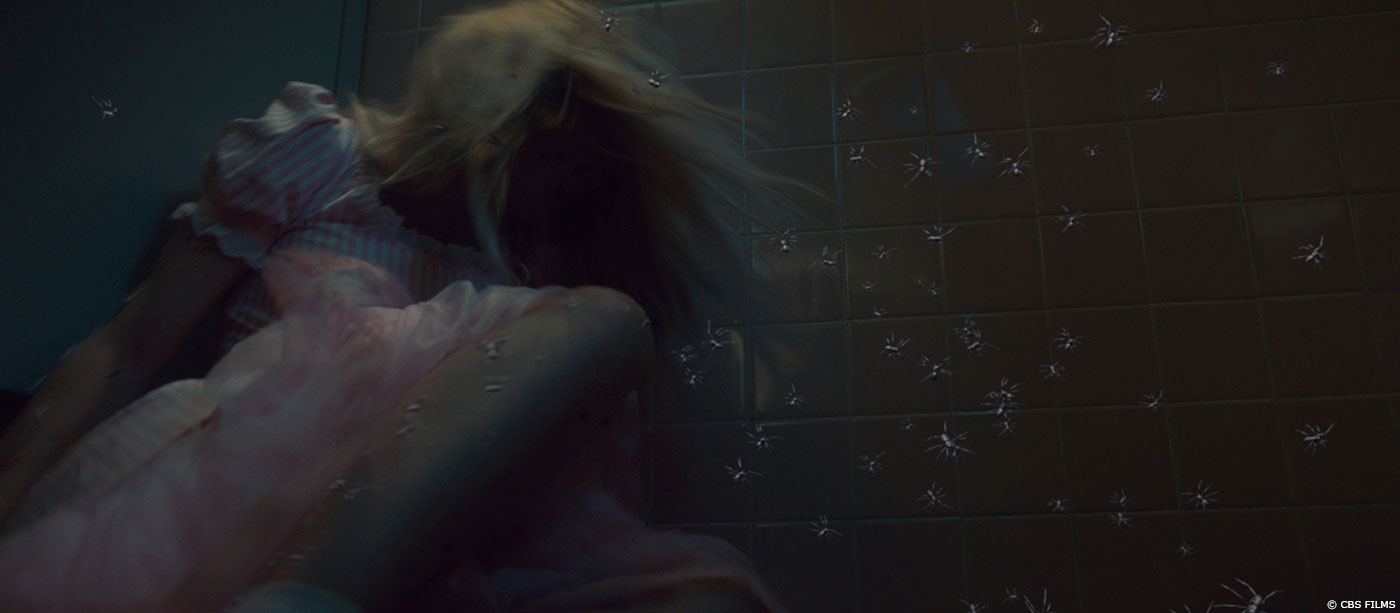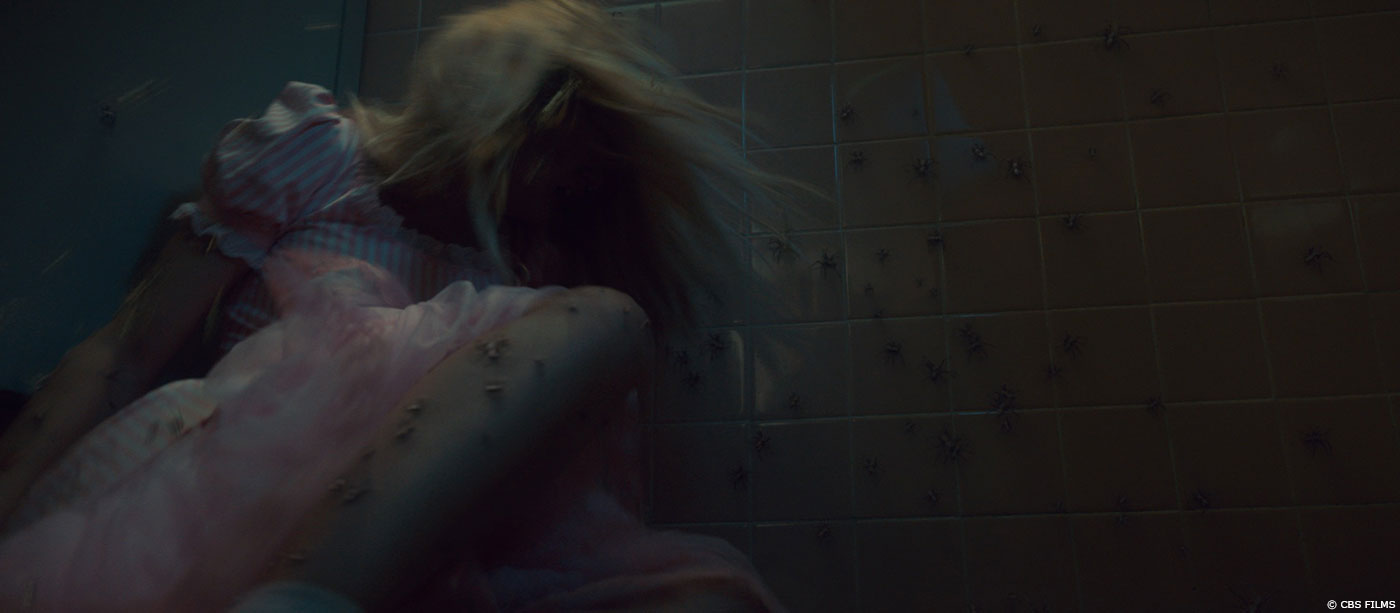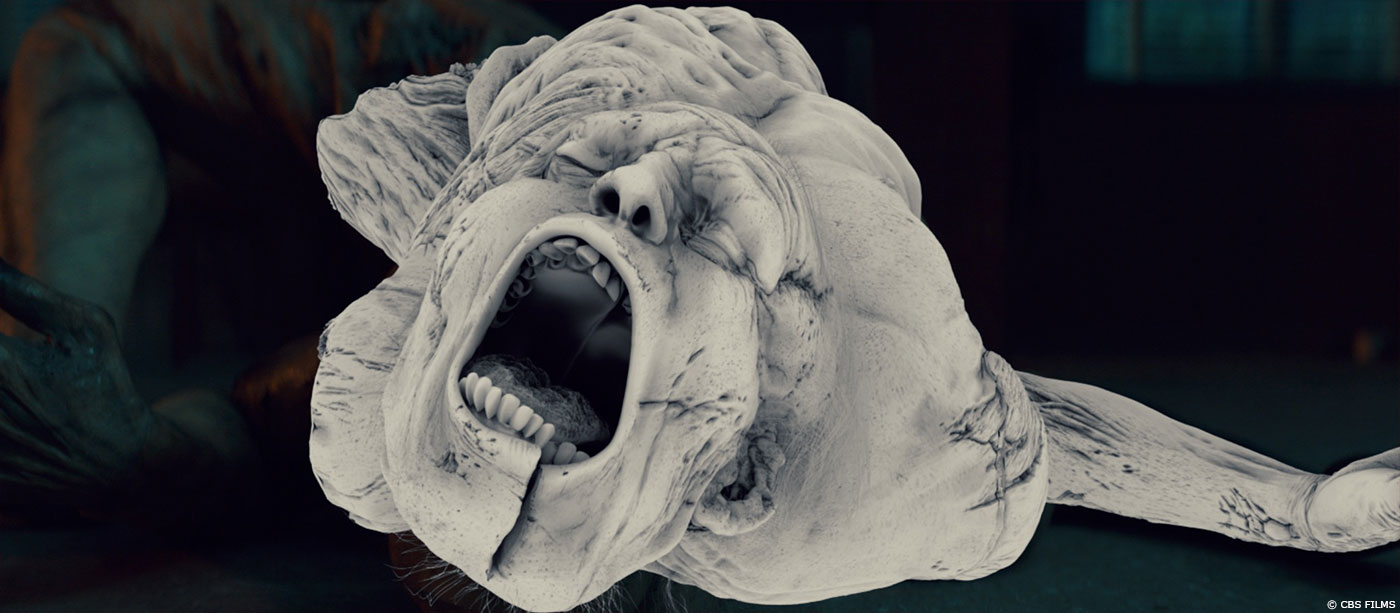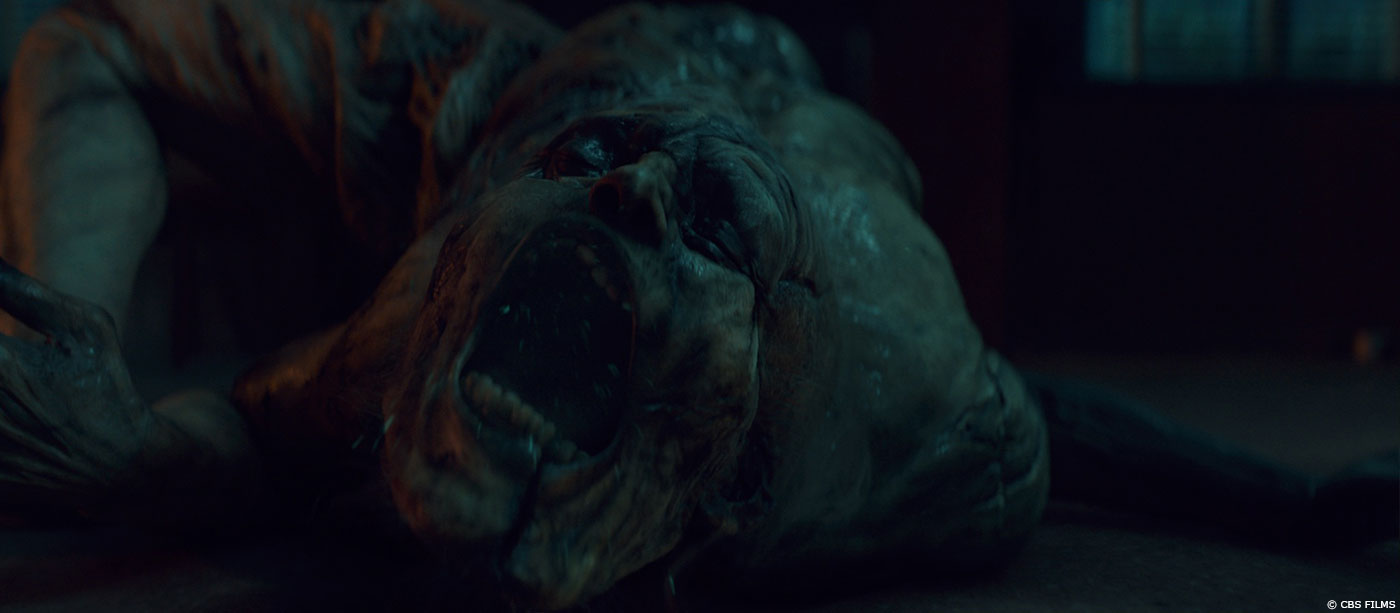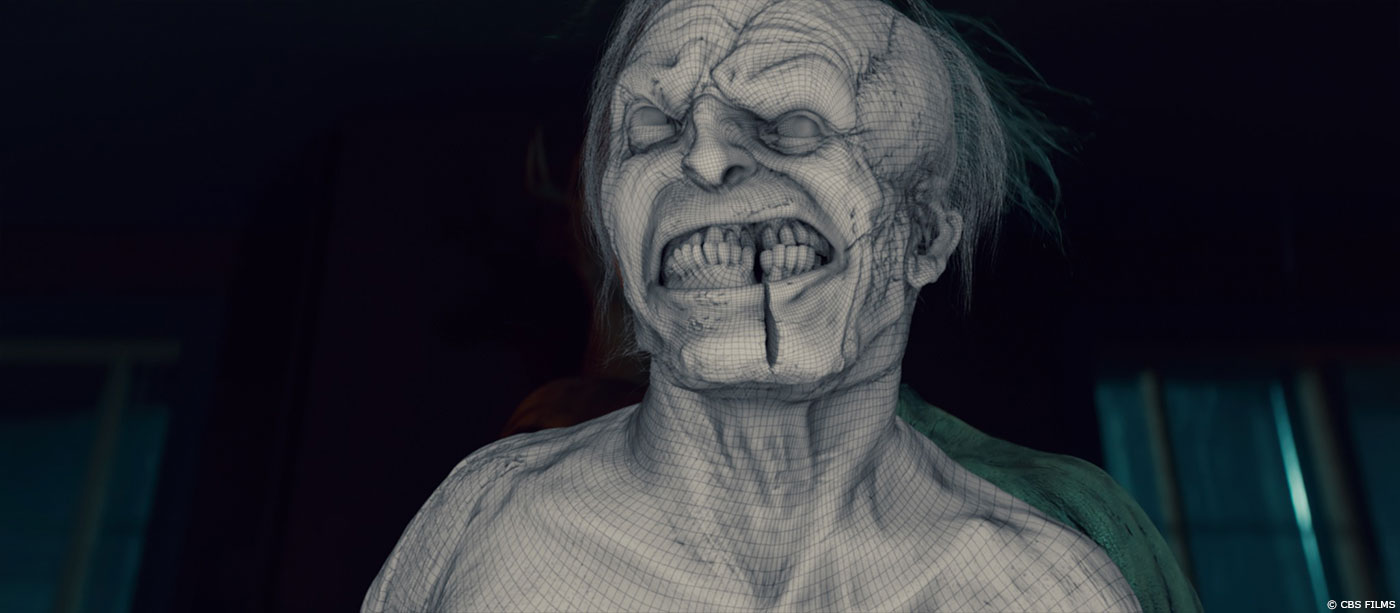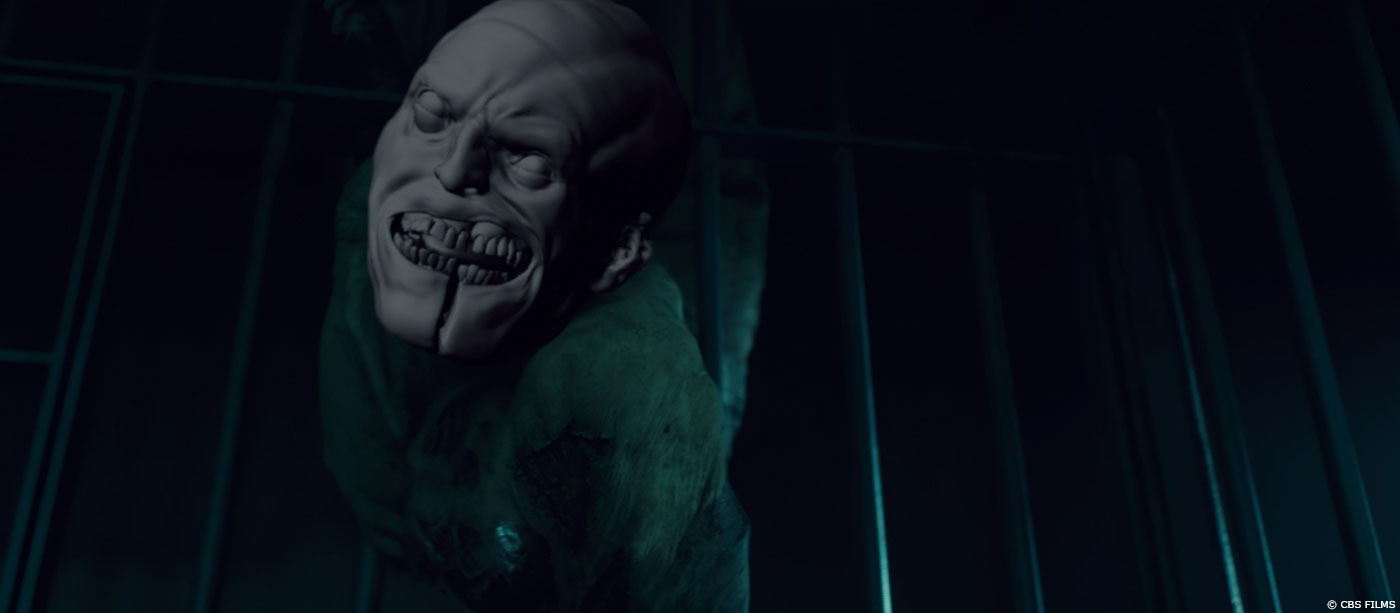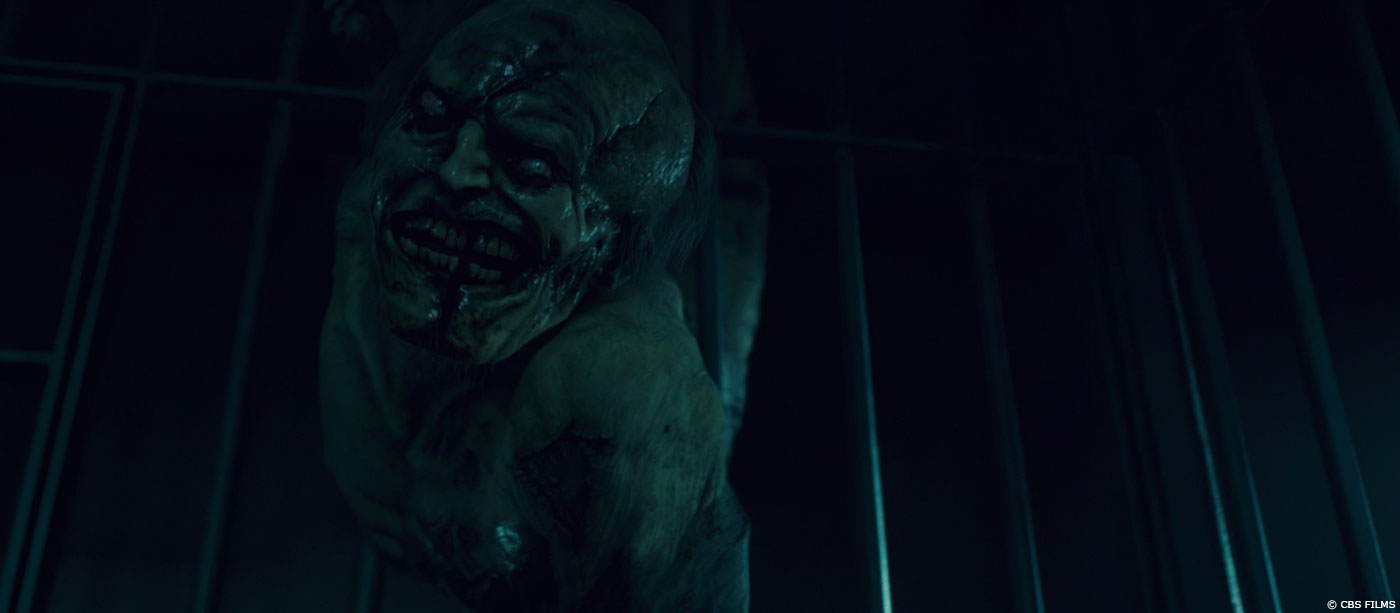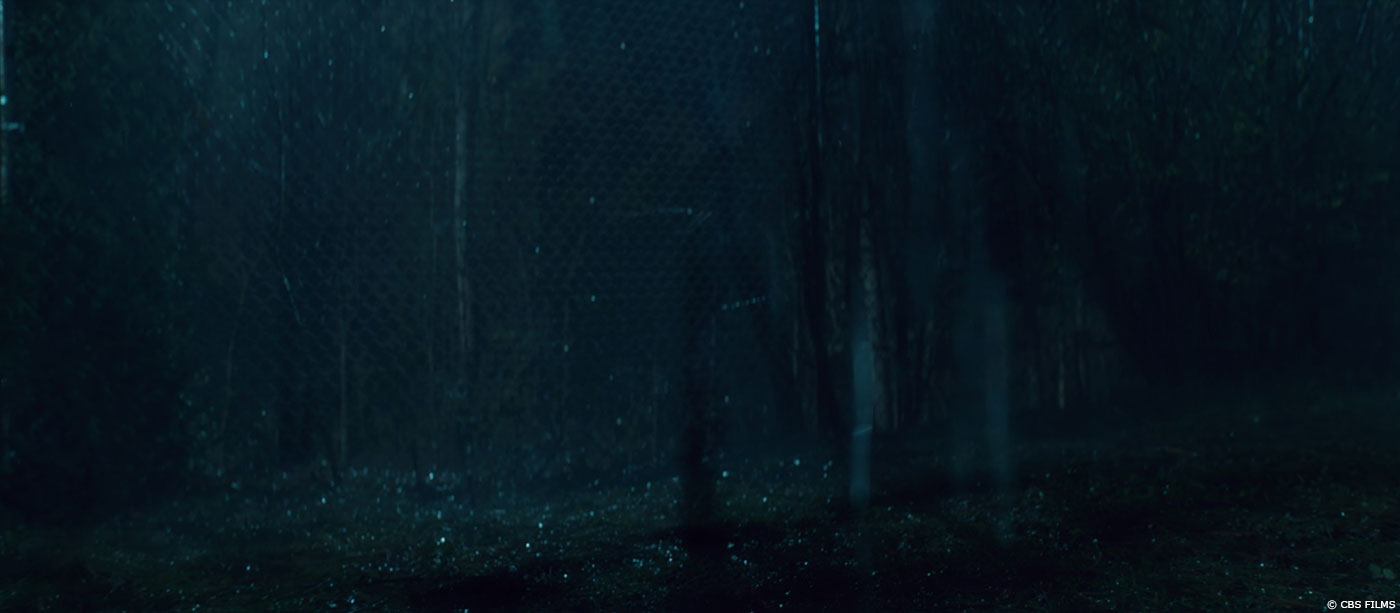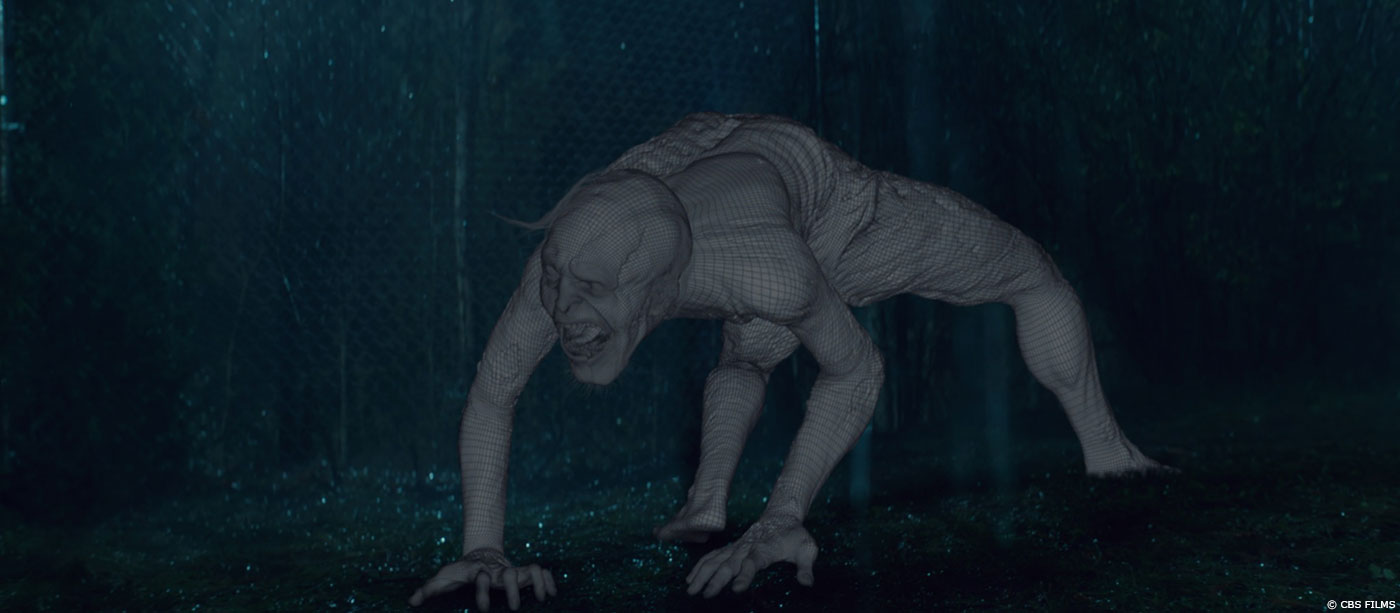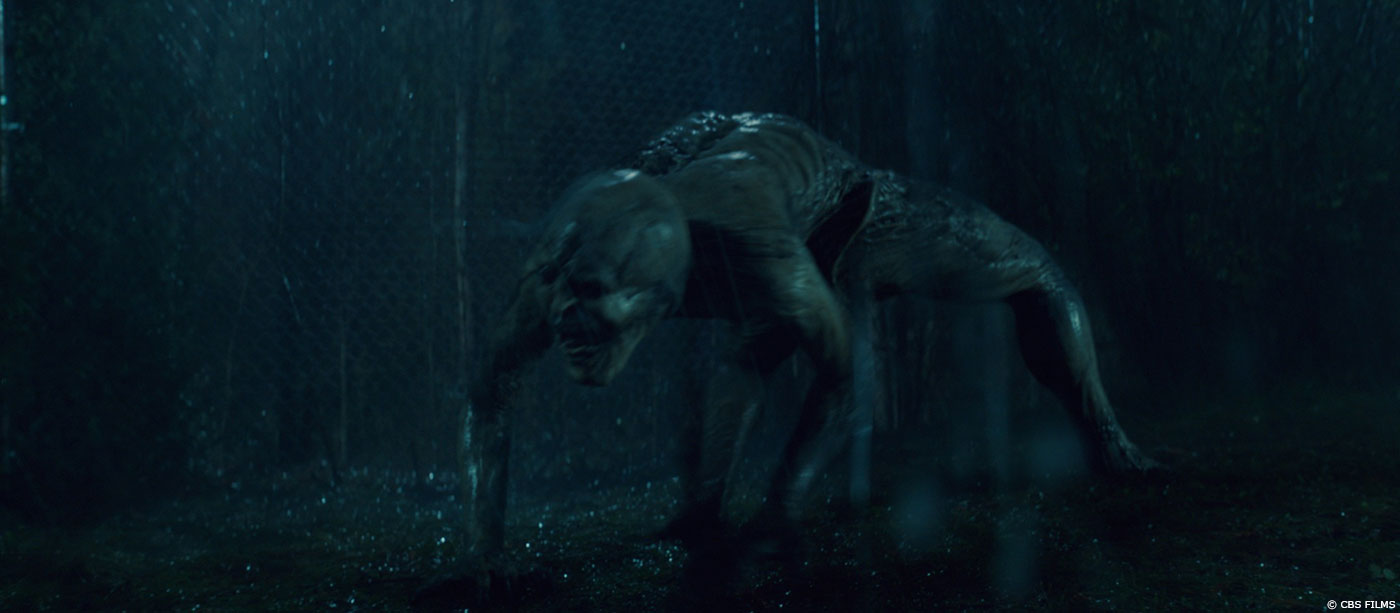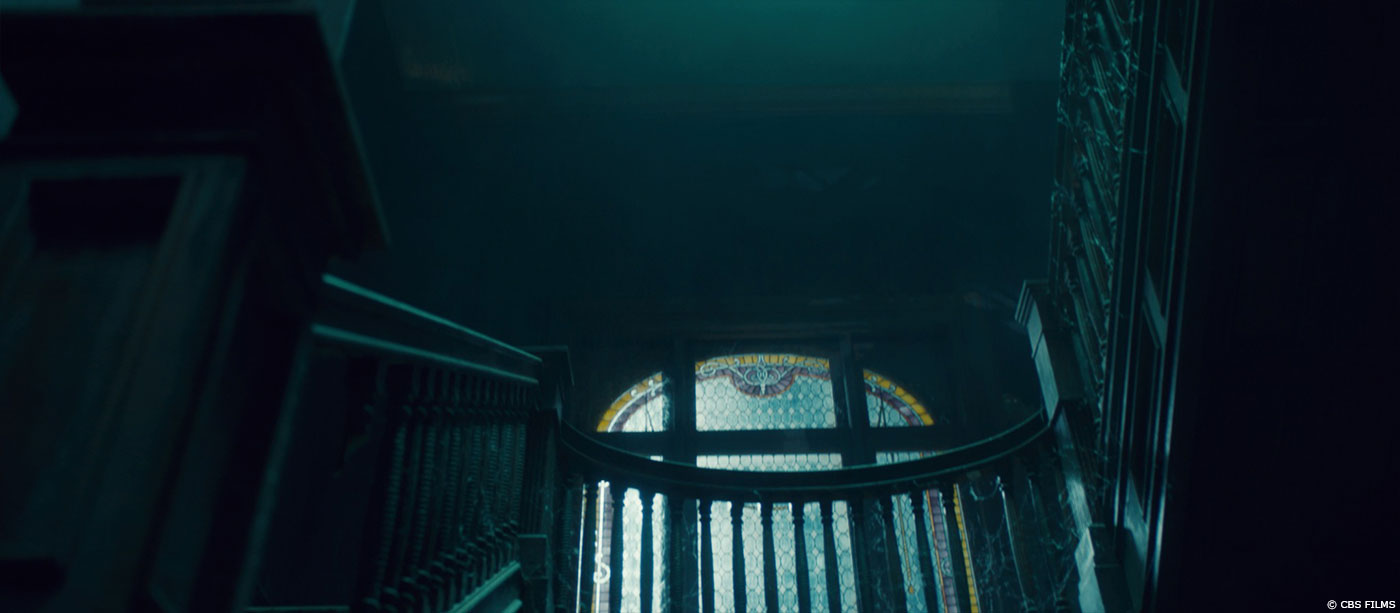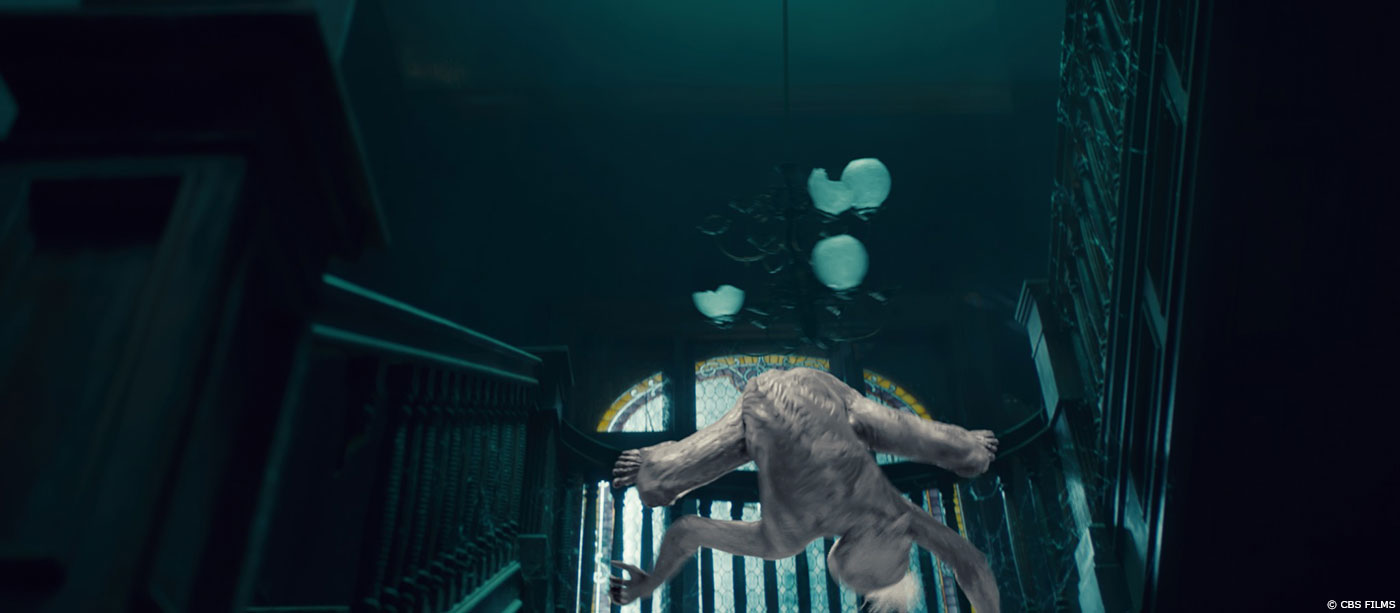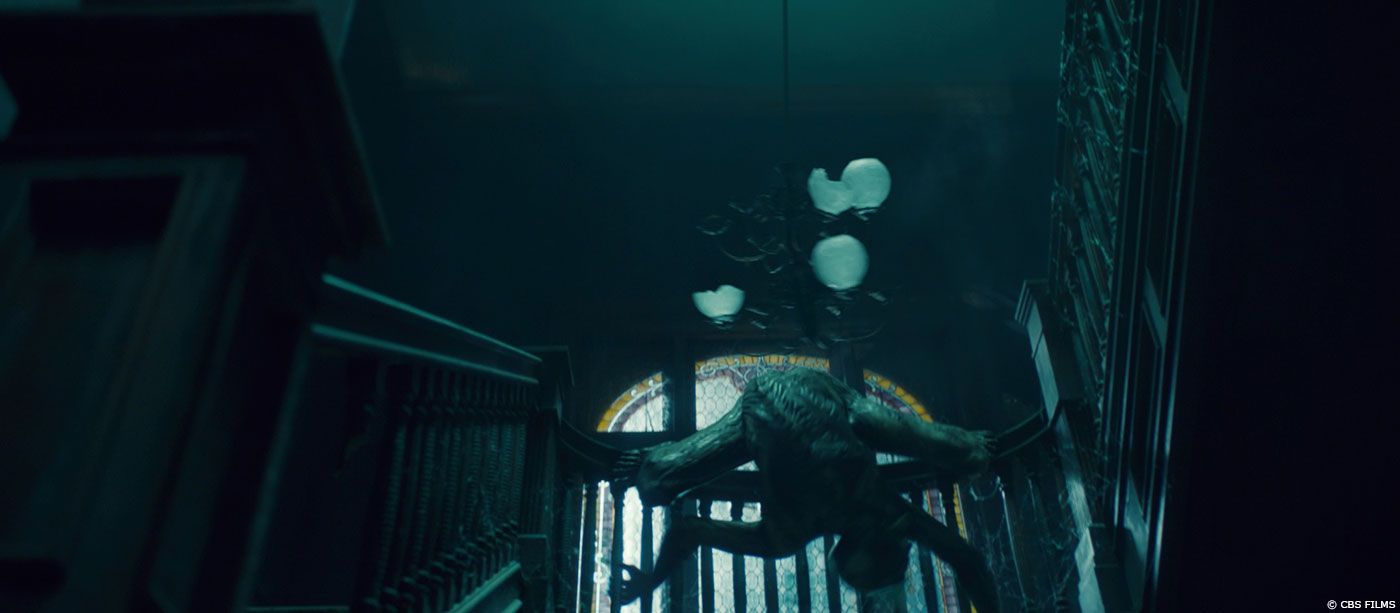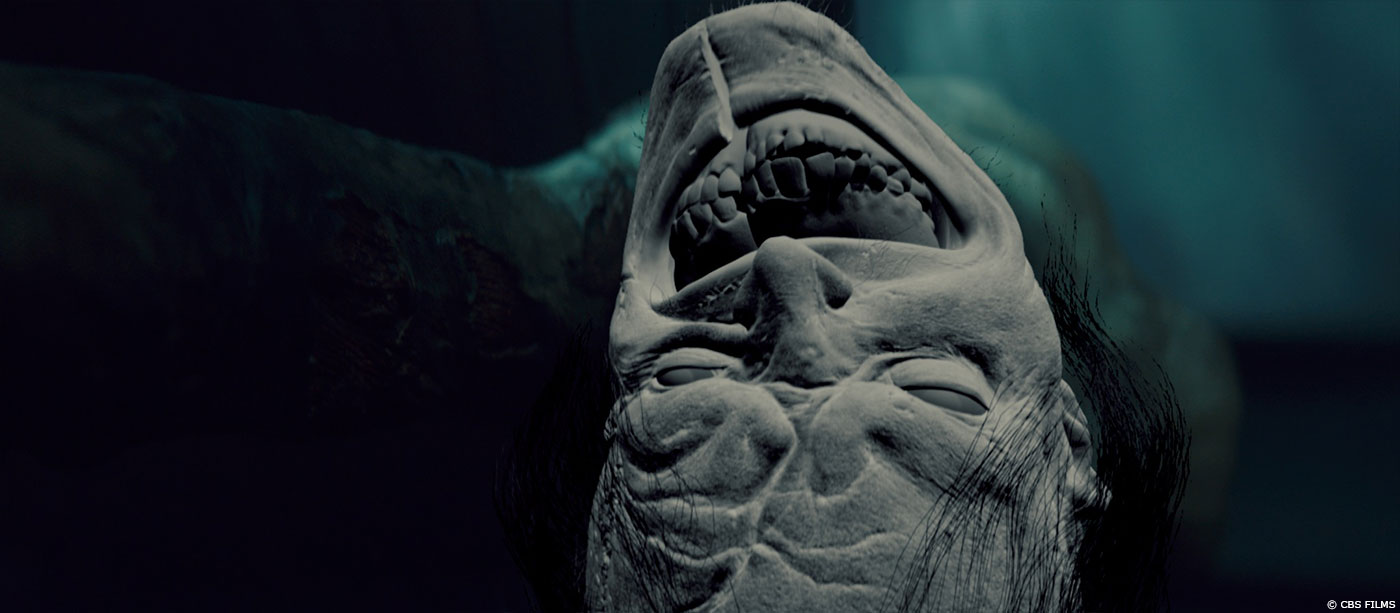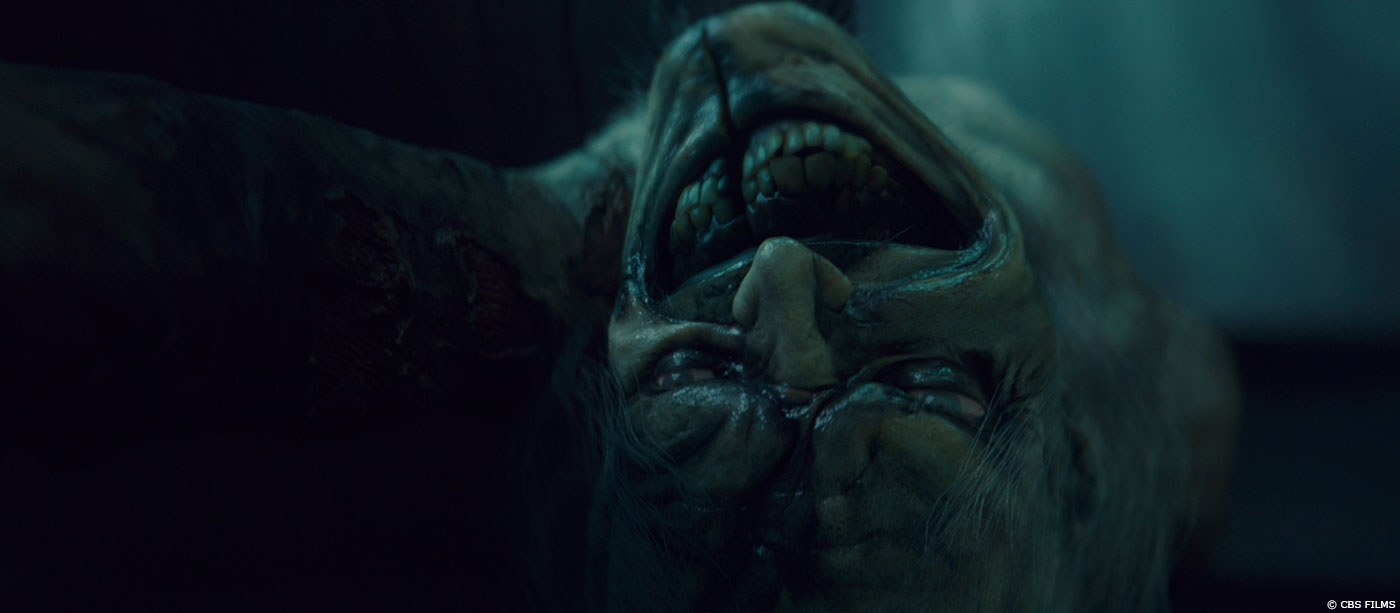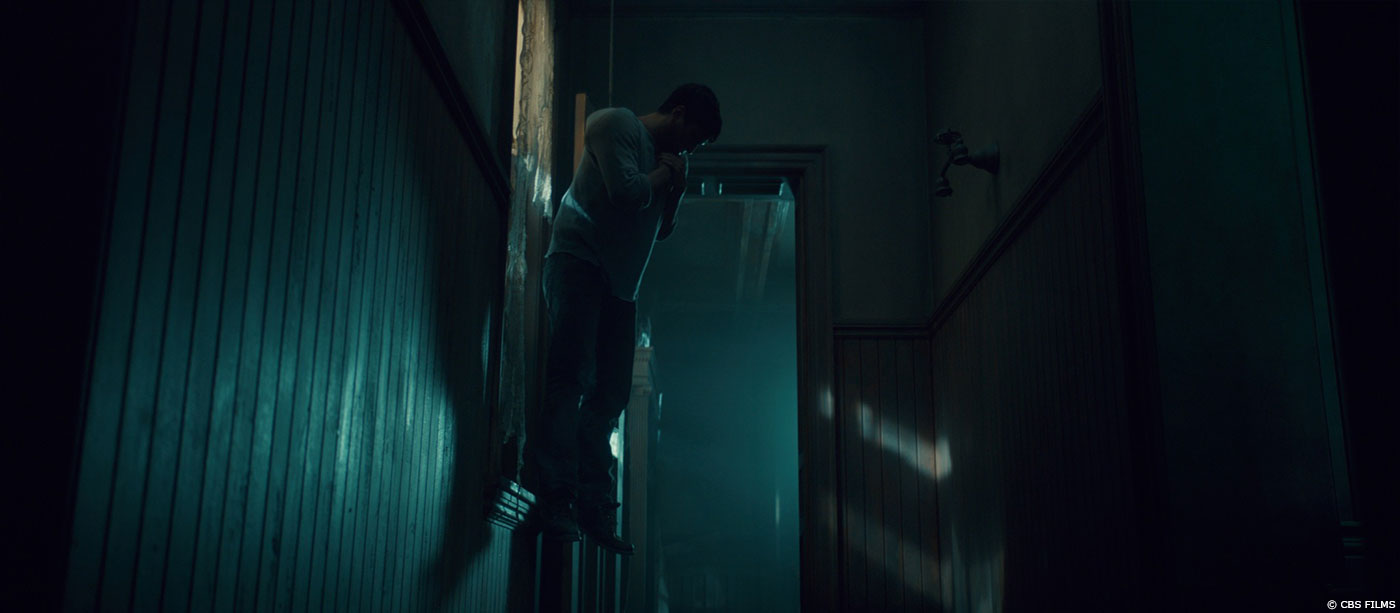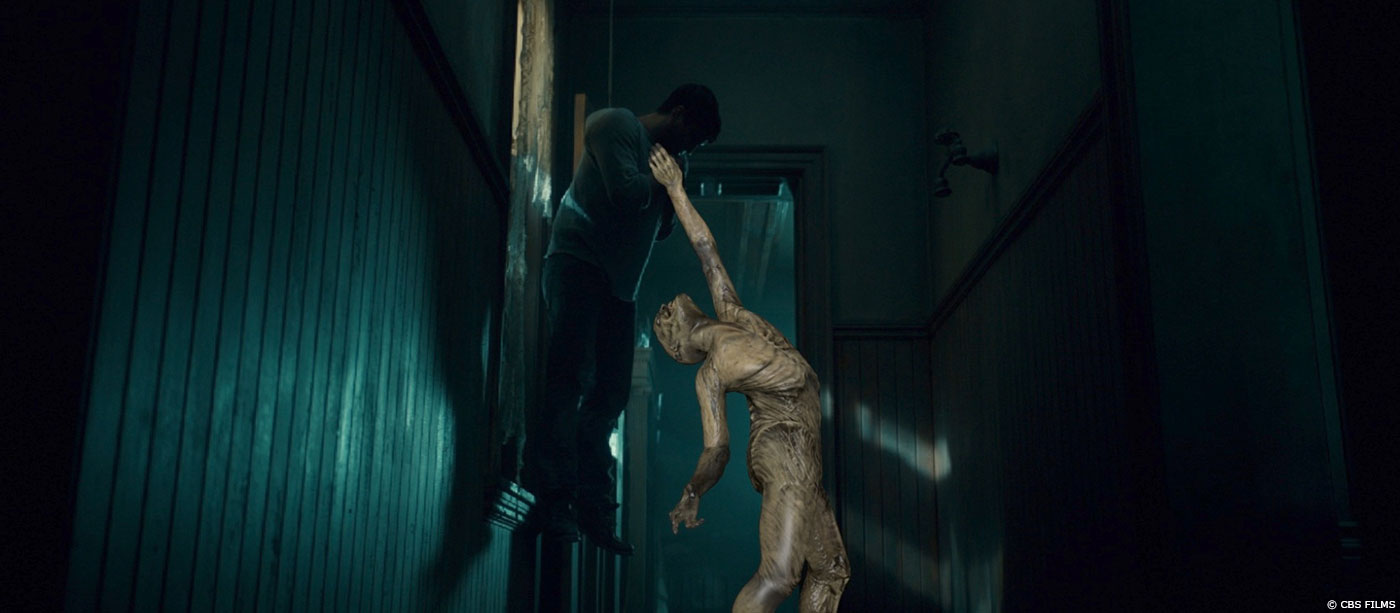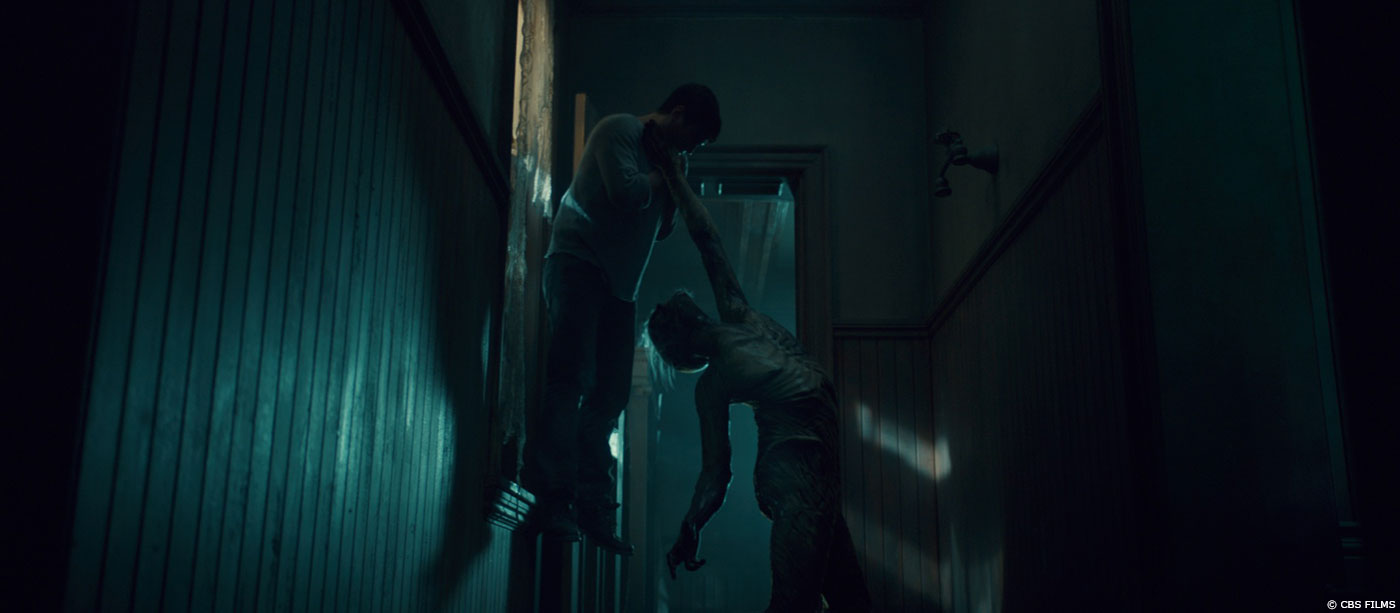A few months ago, Matt Glover told us about the work of Mr. X on THE SILENCE. Today, he tells us about his new collaboration with producer Guillermo del Toro for SCARY STORIES TO TELL IN THE DARK.
How did you and Mr. X get involved on this show?
Long time Mr. X collaborators Miles Dale and Guillermo de Toro were producers on the film – and Guillermo wrote the story as well. Mr. X has worked with the pair on quite a few projects (THE STRAIN, THE SHAPE OF WATER) and we were brought on early during prep– which is always great.
How was the collaboration with director André Øvredal?
It was great. André has such an eye for horror and suspense – I can’t think of a better choice for the film. I’m a huge horror buff myself – so it was nice to work with a kindred spirit. I was also a fan of his two earlier films – TROLLHUNTER and THE AUTOPSY OF JANE DOE. We had a great open dialogue during the whole process.
What was his expectations and approach about the visual effects?
Early on it was decided that each of the Monsters would have a practical component – a performer that would portray them through special make-up effects – our work would need to be a perfect match – realism was the goal. A lot of fantastical things would need to happen, but they needed to feel real and grounded in the story and the performances of the kids. We were going to take over aspects of the Monsters to help them achieve things they couldn’t practically – or take over them entirely, as with some of the shots of the Jangly Man.
How did you organize the work with your VFX Producer?
Greg “Ziggy” Sigurdson was our VFX Producer – I have worked with him on a number of projects over the past few years – so we had already established a good working relationship. Ziggy worked with Miles Dale and other producers on the budgets, he also spent a lot of time working with Patrick Larsgaard, the film editor, and Connor Mcmahon a VFX Editor at Mr. X to facilitate shot spotting and turnovers. We moved fast on this show, so there were a lot of reviews and spotting and notes to roll out. He also worked with our Production team – Jyoti Namjoshi our Production Manager and Kyra Lepp our Production Coordinator to help schedule and prioritize our tasks and deliveries.
How did you split the work amongst the Mr. X offices?
Mr. X Toronto was the main facility, we handled the bulk of animation, lighting and compositing here in Toronto. Bangalore provided a lot of 2D and 3D prep work, as well as asset support in addition to compositing a fair number of shots themselves. Montreal composited some great sequences right near final delivery that helped get us over the finish line.
The movie is set in the past. Can you elaborates about your work on this aspect?
The film is set at the end of the 1960’s in Pennsylvania – we filmed all around Ontario – the Art and Locations Depts. did an amazing job finding real locations that were built in the right era –our environment work involved a lot of removing non-period elements – which sometimes included taking over entire buildings, signage, street lights, cross-walks, bus stops etc.
Our Bangalore studio handled a lot of this work for us. Production Designer David Brisbin gave us an amazing handover off all the research that went into the design of the show – which contained lots of great mock-ups based on photos from our locations for us to use as starting points.
Can you explain in detail about the design and creation of the Scarecrow?
Harold’s design was based very closely on the iconic Gammell drawing from the book. Spectral Motion and the special make up effects team designed what the actor would wear to perform on set – as well as a hero prop that would be hung in the cornfield at the start of the film. Our initial work was to add the layers of CG Bugs that crawl around and in and out of Harold – but as we worked through the sequence Guillermo and André asked us to help enhance Harold by essentially removing his entire mid-section, and replacing one of his arms with thin wooden boards. This way the audience (and the character Tommy) can see right through the Scarecrow – so it is evident there is no one inside wearing a costume – the Scarecrow itself has come to life! Helping set the final look for Harold was a very rewarding process.
Tommy is transforming into a scarecrow. Can you explain in detail about it?
Tommy’s transformation was one of the trickier sequences in the film. On set we filmed Tommy’s performance, and some hay as reference for colour and texture – but everything else would be up to us. Which is great – to have that level of control, flexibility and trust from the Director. We tried a few different looks for the hay – amount, density, locations it would sprout from, the speed it would travel etc. Then we worked on setting the look for the way Tommy’s human skin would transition into burlap similar to the mask the Harold wears. We started by painting over some key frames from each shot, to map the progression across the sequence. Once those were well received – our CG Supervisor Cristian Camaroschi built a CG asset of Tommy’s face – which we used for tracking and match-moving, as well as rendering passes of the post-transformation Tommy look. Our compositors then integrated the CG hay, and used the face renders to animate the skin texture and cracks. The CG Hay was hand animated, and we did some supporting simulations for small particulate in FX.
Later Ruth is getting surrounded by spiders. How did you create them?
All the spiders in The Red Spot sequence are CG. Early in pre-production we created some contact sheets of different body types of spiders, and options for colour. André and Guillermo made some selects and we started building hero assets to use.
Can you tell us more about their spiders crowd creation and animation?
At the start of the scene – the single hair/leg that sticks out from the pimple and the first couple of spiders moving under the skin and that crawl through are hero animated spiders, followed quickly by a wave of simulated spiders that we used Massive to create. Our Crowd Lead Johnny James and Crowd Artist Ezra Waddell blocked the whole scene out, and went through a few iterations to get the amount and variations in colour and sized nailed down. We also did some interactive simulations for any time Ruth or the other characters try and brush the spiders off, as well as the bucket of water that splashes over them.
Jangly Man is really terrifying. Can you elaborates about his design and creation?
The Jangly Man was our biggest challenge! As with the other Monsters, since there would be a practical component – Mike Hill and the special make-up effects teams worked out a design for the latex suit and make-up that performer Troy James would wear. We did a lot of early concept work and motion tests to help start informing our animation process – during prep we had Troy and André come to Mr. X and we did a quick mocap session to capture some of the poses and actions that he would do in the film. This gave us a little head start – we also cyber-scanned him to begin build a hero digi-double.
Can you tell us more about his rigging and animation?
The Jangly Man presented many rigging challenges – Jason Teske was our Rigging Supervisor on the show. We had two rigs – a normal biped style rig to handle most of the action that was required – and another ‘disassembled’ rig – where he was split up into separate body parts. The rigs matched 1:1 so that the animators could use the rig just as they would the initial rig or they could also split off limbs an animate them separately to do the complex shots where Jangly Man pulls himself together. Martin Hesselink, our Animation Supervisor and his animation team did an amazing job with the character.
Jangly Man can twist his body in any ways. How does that affects your animation work?
We used Ziva for muscle simulations and interactions with the environment. But, instead of doing a full hero muscle setup, we converted the caches from animation into tissues, and used goal attachment to have them follow the anim. This let us use Ziva’s volume preserving properties to help control things like the volume and flex of his rib cage and helped prevent crashing and interpenetrations as he was contorting or hitting extreme poses. We also used collision simulations to final the shots where his body parts were rolling across the floor, allowing them to flatten and compress against the surface (or each other) The simulations were very fast and simple to set up, and saved us an enormous amount of time in finalling work.
How did you create the various shaders and textures for his skin?
We started from the cyberscan that we did at Mr. X using our XScan camera array – we extracted the base textures from there, cleaned them up by hand to match the onset practical photography exactly – since we either needed to take over part of him and match the plate perfectly, or for full CG shots we would be a direct cut to a shot that contained part of a practical Jangly Man. Matching the level of his spec and wetness was another challenge since he often enters from being out in the rain. We created a reflection coat layer that could be dialed way up if need be.
He is really pale, how did you manage this aspect with the lighting?
Because for most shots we had Troy performing in the suit – we had perfect lighting reference to match into for his skin. For shots where we were going to be 100% CG with Jangly Man we still tried to have Troy standing in for a reference plate. We also shot and extracted chromeball HDRIs and charts to help the match the on set lighting. Viduttam Katkar our Lighting Supervisor and Lead lighter Alan Bradshaw were able to match our raw CG renders very close to the real lighting environments. Lucian Boicu and our compositors worked very hard to match the look of the photography exactly – and in some instances we were able to keep and project some of the original sculpt detail from the latex mask back onto the CG – to make it seamless.
How was simulated his presence on-set?
Troy James, an actor who can do some amazing things with his body, played the Jangly Man. In most shots if the Jangly Man is walking, crawling, standing up etc. – It’s Troy in the suit. We replaced his face with hero facial animation to give him more articulation since the mask didn’t allow for much or any facial expression, especially the times when he speaks. Guillermo and André really wanted us to help finish Jangly Man’s personality.
Can you explain in detail about the creation of the Ghost of Sarah Bellows?
We did a lot of exploratory work for Sarah, and in the end, we ended up keeping it very subtle and old-school. She has areas of transparency which allow her skeleton to be visible through in body in certain areas – and we also did some CG hair to ramp up the intensity near the end of the film. We matchmoved her and created a CG Skeleton that was rendered and blended by the compers. Our Montreal team did some really nice work integrating the elements to find a look that André was after.
Which sequence or shot was the most challenging?
Tommy’s transformation into the scarecrow – which was the most open-ended creatively for is, and required a lot of trial and error and RND.
Is there something specific that gives you some really short nights?
Just the volume of relatively complex shots – they did a lot practically on this film, so if it could be done without VFX they tried, which meant what was left over was usually intricate, and complex and nuanced.
What is your favorite shot or sequence?
Definitely the reveal and assembly of the Jangly Man. It was our most complex in terms of animation – and is entirely CG for a large portion. The shot where the head falls down the chimney and rolls right into camera was a lot of work to get just right. It was also a sequence we were very hands on with from day one. From blocking out the plate photography on set, right up to final animation and finishing touches such as water and rain droplets artfully bouncing off the limbs.
What is your best memory on this show?
It was a very collaborative effort between a lot of like-minded storytellers – André was very open to new ideas and different takes – he was also very supportive of all the effort that went into our work. We had lots of in person reviews with André and Guillermo – and often the artists could get feedback directly from them.
How long have you worked on this show?
We started in pre-production in August of 2018 and finished final VFX in July 2019.
What’s the VFX shots count?
361 final shots in the film.
What was the size of your team?
Around 240 people across all our studios.
What is your next project?
My wife and I just had our second child very recently – so, some time off to enjoy that. And now right back into it on an exciting project which I can’t name just yet!
A big thanks for your time.
WANT TO KNOW MORE?
Mr. X: Dedicated page about SCARY STORIES TO TELL IN THE DARK on Mr. X website.
© Vincent Frei – The Art of VFX – 2019


